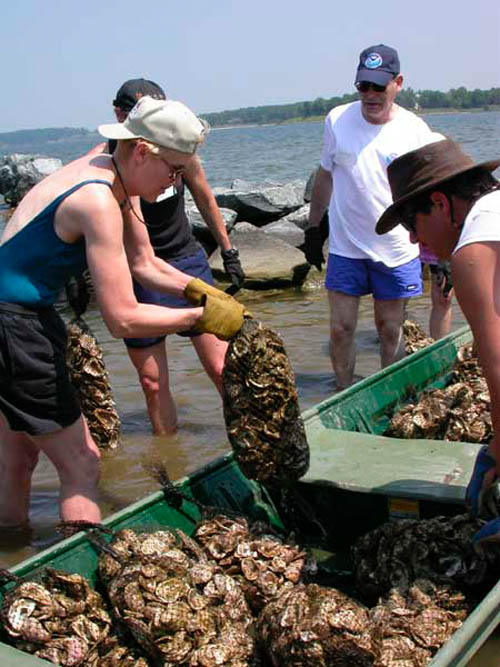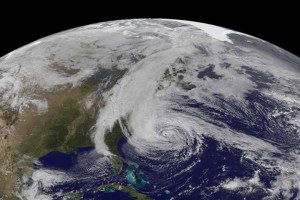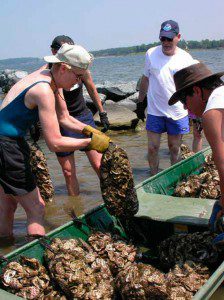
02 Nov EARTH MATTERS: THE OYSTER IS YOUR WORLD
Any environmental blog this week has to talk about the devastation caused by Hurricane Sandy. I’m going to write about ecosystem restoration. The two issues are, in fact, closely related.
What does restoration have to do with hurricanes? Quite a lot, in fact.
Healthy habitats like oyster beds, mangroves, sea grass, and coral reefs can protect against storm surges and coastal flooding. When habitats are degraded, storm impacts are stronger. Protecting, maintaining, and restoring these habitats can provide important natural services and benefits for coastal communities.
As Paul Greenberg noted in the New York Times this week:
“Just as corals protect tropical islands, these oyster beds created undulation and contour on the harbor bottom that broke up wave action before it could pound the shore with its full force” (go to http://www.nytimes.com/2012/10/30/opinion/an-oyster-in-the-storm.html ).
Oyster restoration was a major theme at this year’s Restore America’s Estuaries annual conference in Tampa, Florida, as well (see https://www.estuaries.org/conference/).
Like Greenberg, several presenters noted that oysters are amazing – a single oyster can filter about 50 gallons of water a day! Restoring oyster beds can serve multiple functions: filtering water, thus improving water quality; creating improved habitat for sea grasses, which can stabilize shore lines; and providing protection against storms. Plus they make pearls and are very, very tasty.
Much oyster habitat has been lost, but communities are working to rebuild it. Oyster larvae need hard surfaces to attach to as oyster spat (see http://www.hpl.umces.edu/hatchery/index.php/oysters/oysters-life-cycle/) for a description of the oyster’s life cycle). Without hard substrate like old oyster beds for spat to grow on, the larvae float aimlessly and die. But many old oyster beds have been removed with nothing to replace them.
Luckily, oyster bed restoration can work. By returning hard surfaces to the ocean, oyster spat can attach to them and grow. For example, environmental science students at Moody High School in Texas have partnered with the Harte Institute to restore local oyster beds (for more information on the Harte Institute program, see (http://oysterrecycling.org) as well as a video about oyster restoration, “Sink Your Shucks,” at http://www.youtube.com/watch?v=BpiOcvMoZQY.
Students collect shells from local restaurants, bag them in metal mesh bags, and return them to the ocean. This allows the larvae to attach themselves to the oyster shucks. As one of the students at the RAE conference said: “We pulled up one of the bags, and I was so excited I started jumping up and down! It was working. There were lots of spat on the old shells.”
In another terrific presentation, Queen Quet of the Gullah/Geechee Nation (www.gullahgeecheenation.com) talked about her work talking about the old Gullah tradition of returning oyster shells to the ocean. She said that folks she talked to said, “I remember my grandfather taking a boatload of shells out to the oyster beds and dumping them in. I just thought he was trying to get rid of them.”
By using their traditional ecological knowledge and returning to traditional practices, the Gullah are also working to restore habitat and maintain healthy ecosystems.
Habitat protection, maintenance, and restoration is a key part of preparing for the increasing – and increasingly powerful – storms that a changing climate is exacerbating. A little oyster can make a big difference.




Sorry, the comment form is closed at this time.